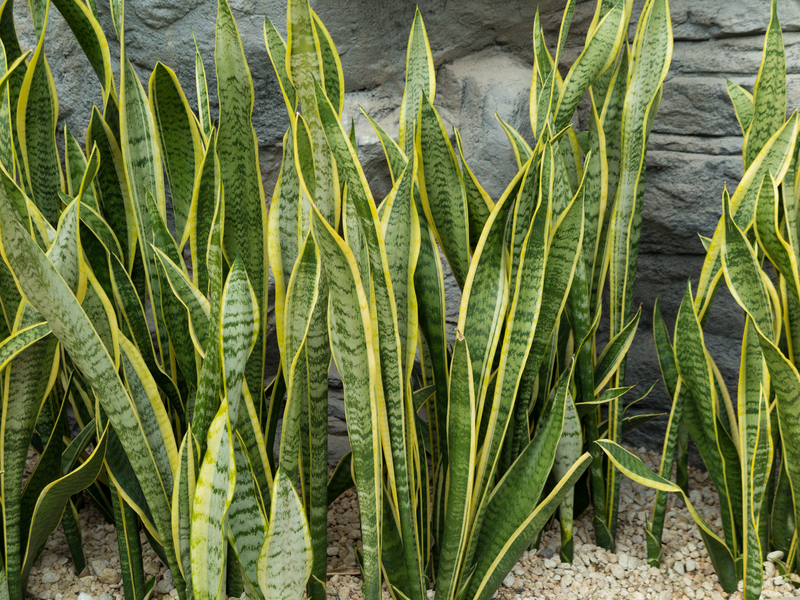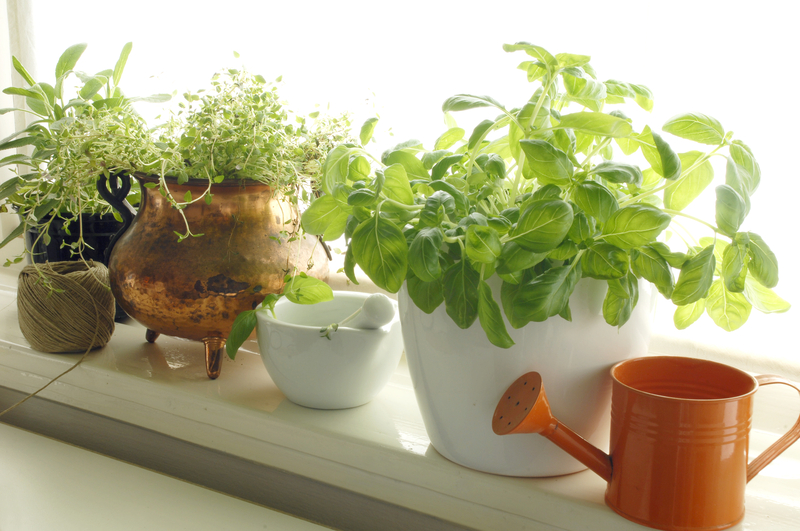Gardening in Containers: A Flexible Growing Solution
Posted on 20/08/2025
Gardening in Containers: A Flexible Growing Solution
Gardening in containers is an increasingly popular way to cultivate beautiful flowers, delicious fruits, vegetables, and aromatic herbs. Whether you live in a cozy apartment, have a small backyard, or just want greater control over your plants, container gardening offers remarkable versatility and possibilities. This comprehensive guide will introduce you to the essentials of container growing, share expert tips, and explore the many advantages of this innovative approach to gardening.

Why Choose Container Gardening?
Container gardening--also known as growing in pots or planter gardening--is not just about saving space. It's a smart, adaptable, and eco-friendly solution for both novice and seasoned gardeners. Let's explore the compelling reasons why container gardens are an excellent choice:
- Flexibility: Easily move plants to catch optimal sunlight, protect them from frost, or redesign your outdoor (or indoor) space.
- Accessibility: Ideal for those with mobility challenges--raise containers to waist height for comfortable gardening.
- Space-Saving: Perfect for urban environments, balconies, patios, and small yards.
- Pest and Disease Control: Separate plants to curb the spread of issues and enjoy healthier crops.
- Soil Management: Customize your soil for different plants, improving growth and yields.
- Aesthetic Appeal: Create stunning visual displays with varied shapes, sizes, and arrangements.
If you're searching for a flexible growing solution, gardening in containers could be the right approach for your lifestyle and space requirements.
Essential Elements for Successful Container Gardening
Selecting the Right Container
Successful container gardening begins with choosing the best vessel for your plants. Here are key considerations:
- Size: Make sure the pot is large enough to accommodate the mature root system of your chosen plant. Deep-rooted vegetables, like tomatoes or carrots, need more space than shallow-rooted herbs or succulents.
- Material:
- Terracotta: Classic and porous, but can dry out quickly and are prone to cracking in frost.
- Plastic: Lightweight and retains moisture well. Available in a multitude of colors and sizes.
- Ceramic: Glazed pots are attractive and retain water, but can be heavy.
- Fabric and Grow Bags: Great for root aeration, lightweight, and easy to store when not in use.
- Wood: Natural and insulating but susceptible to decay if not treated properly.
- Drainage: Ensure containers have adequate drainage holes to prevent root rot.
Soil Considerations
Unlike traditional ground gardening, growing in containers requires specialized potting mix for optimal results:
- Quality Potting Mix: Use a blend formulated specifically for containers, offering a mix of peat, compost, perlite, and vermiculite. This ensures water retention and aeration.
- Fertilizer: Regularly feed container plants since nutrients leach away with frequent watering. Choose slow-release or liquid fertilizers suitable for your plant types.
- pH Adjustment: Some plants have preferred pH ranges. Test and amend your soil accordingly for blueberries, azaleas, or citrus, for example.
Light & Placement Optimization
Maximize plant health in your container garden by understanding their sunlight requirements:
- Full Sun: Most edible plants and many flowers require at least 6-8 hours of direct sunlight daily. Place these containers on south-facing patios or balconies.
- Partial Shade: Ferns, impatiens, and some leafy greens perform better with less intense light.
- Mobile Gardening: One of the biggest advantages of growing in pots is the ability to relocate them throughout the season as the sun's angle changes or to shield them from harsh weather.
Top Plants for Container Gardening
Best Vegetables for Pot Growing
- Tomatoes: Choose compact 'bush' or dwarf varieties. Use stakes or cages for support.
- Peppers: Both sweet and hot peppers thrive in containers.
- Lettuce & Greens: Quick-growing, cut-and-come-again varieties suit window boxes and smaller pots.
- Radishes & Carrots: Opt for short-root varieties for shallower containers.
- Herbs: Basil, parsley, thyme, mint, and oregano are excellent for kitchen window gardens.
Fruit & Berry Options
- Strawberries: Hanging baskets or tiered pots maximize space for this perennial favorite.
- Dwarf Fruit Trees: Citrus, figs, apples, and cherries are available in dwarf forms perfect for large pots.
- Blueberries: Require acidic potting mix but grow happily in containers.
Flowers & Ornamental Plants
- Petunias: Cheerful, bountiful, and available in vibrant colors.
- Geraniums: Classic choice for bright, sun-filled containers.
- Begonias & Impatiens: Thrive in the shade and provide season-long color.
- Grasses & Sedges: Add height, structure, and movement to patio arrangements.
The Art of Arranging Container Gardens
Combining several plants together in a single container creates a lush, multi-dimensional impact. This is often referred to as the "thriller, filler, spiller" method:
- Thriller: A tall focal point (such as upright grasses, cannas, or a dwarf tomato).
- Filler: Mid-size, mounding plants that fill the center (petunias, coleus, or parsley).
- Spiller: Trailing varieties that drape over the side (nasturtiums, sweet potato vine, or strawberries).
This approach not only maximizes visual interest but also makes efficient use of soil and sunlight in your container garden.
Care and Maintenance of Container Gardens
Watering Techniques
Plants grown in containers dry out much faster than those in the ground. Here's how to keep them healthy:
- Consistent Moisture: Check soil daily and water as needed, especially during hot weather. Early mornings are ideal for watering.
- Proper Drainage: Always empty saucers underneath containers to prevent root rot.
- Mulching: Add a layer of organic mulch to help retain moisture and suppress weeds.
Feeding and Fertilization
- Fertilize Regularly: Because nutrients leach out with watering, most container gardens benefit from a biweekly application of water-soluble fertilizer or a top-dressing of slow-release fertilizer.
- Watch for Deficiencies: Yellowing leaves or poor growth may indicate a lack of nutrients. Adjust your feeding schedule or product accordingly.
Pest and Disease Control in Container Gardening
- Physical Barriers: Netting or floating row covers can prevent insect attacks.
- Sanitation: Regularly remove dead leaves and spent blooms to prevent fungal diseases.
- Isolate Affected Plants: Quickly remove any sick plants to avoid the spread of disease.
- Use Natural Remedies: Consider neem oil, soap sprays, or companion planting as eco-friendly pest controls.
Creative Container Ideas
When it comes to gardening in containers, your creativity is the only limit. Explore these inventive ideas for your container garden:
- Vertical Gardens: Use wall planters, pallet gardens, or stackable pots to save space and add visual height.
- Repurposed Items: Old boots, teapots, wheelbarrows, or even gutters make quirky, unique planters.
- Window Boxes: Enhance curb appeal and grow fresh herbs or blooms just outside your kitchen.
- Hanging Baskets: Ideal for strawberries, cherry tomatoes, or trailing flowers.
- Cluster Arrangements: Group containers of different heights and shapes for a dynamic, layered look.
Seasonal Container Gardening Tips
Spring & Summer
- Plant Warm-Loving Crops: Tomatoes, peppers, basil, and summer blooms thrive.
- Water Often: Increase watering as temperatures rise.
- Rotate Containers: Ensure even sun exposure and prevent legginess.
Fall
- Sow Cool-Weather Greens: Grow lettuce, spinach, kale, and radishes in fall.
- Switch Up Flowers: Chrysanthemums and pansies provide autumn color.
- Prep for Dormancy: Move tender perennials indoors or insulate pots before frost.
Winter
- Grow Indoors: Herbs, microgreens, or dwarf citrus trees can flourish on a sunny windowsill.
- Protect Containers Outdoors: Use bubble wrap or hessian sacks to insulate roots from freezing temperatures.
- Reduce Watering: Plants need less moisture when dormant.
Common Challenges and Solutions in Container Gardening
Root Bound Plants
When plants outgrow their pots, their roots can become tangled and stressed, leading to poor growth. Solution: Re-pot into a larger container and loosen the root ball before transplanting.
Overwatering & Underwatering
Knowing exactly when and how much to water can be challenging. Solution: Use self-watering pots, invest in soil moisture meters, and always ensure proper drainage.
Nutrient Depletion
Frequent watering can flush nutrients from your soil. Solution: Use slow-release fertilizers and top-dress your containers with compost.

Frequently Asked Questions about Container Gardening
Can you grow any plant in a container?
While most plants can adapt to container gardening, some large trees or deep-rooted species require vast growing areas. Dwarf and compact varieties are best suited for pots and planters.
How often should I water my container plants?
It depends on weather, plant type, and pot size. Typically, check soil moisture daily--water when the top inch feels dry. Hot weather and small pots may require daily watering.
What is the best soil for gardening in containers?
Use a high-quality, soilless potting mix rather than garden soil, which can compact and restrict root growth. Potting mix ensures better aeration, water retention, and drainage.
Conclusion: Embrace the Flexibility of Container Gardening
Gardening in containers provides gardeners with nearly limitless opportunities. Whether you wish to adorn a balcony, brighten a patio, or harvest fresh produce from your windowsill, container gardening adapts to your space and creativity. By choosing the right containers, soil, plants, and maintenance strategies, you can enjoy a thriving garden--anywhere. Embrace the flexibility and beauty of container growing today and transform any space into your own green oasis!
Ready to get started? Try container gardening this season and discover a flexible growing solution that fits your lifestyle, space, and horticultural dreams.

